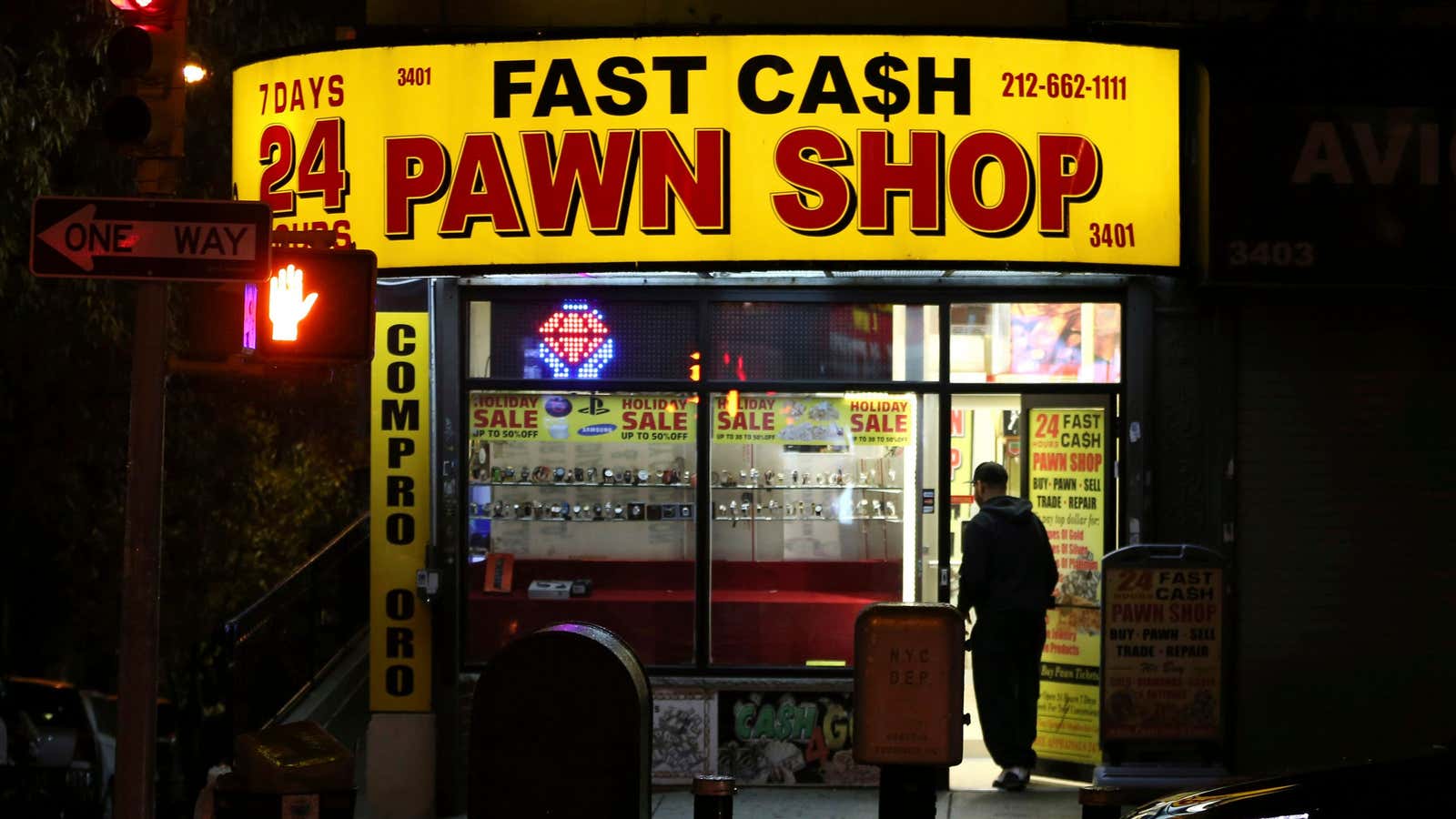Until 2008, a cash-strapped customer in Ohio seeking a quick, two-week loan from a payday lender might find themselves paying a hefty fee. These unsecured short-term loans—often secured with a post-dated check and seldom exceeding $500 at a go—carried annual percentage rates (APR) of up to almost 400%, more than ten times the normal limit permitted by usury laws.
Then, 11 years ago, the state stepped in to make such loans prohibitively expensive to offer. Ohio’s Short-Term Loan Law limits APR to 28%, slashing the margins of predatory lenders, and effectively banning payday loans in the state. But while the law was intended to protect the poor, it seems to have instead sent them scurrying to other, equally insecure, alternatives.
A new economics paper by Stefanie R. Ramirez of the University of Idaho, published in the journal Empirical Economics, looks into the effect of the legislation. Though it succeeded in ending the loans, Ramirez argues, it had the unintended effect of shifting the problem to other industries favored by people with few alternatives and bad credit. Would-be borrowers are now relying on pawnbrokers, overdraft fees, and direct deposit advances to get themselves quickly into the black when times get tough.
Ramirez used Ohio state licensing records to measure changes in the number of pawnbrokers, precious-metals dealers, small-loan lenders, and second-mortgage lenders operating in the state. Once laws were introduced, she writes, the number of pawn shops in Ohio increased by 97%, while small-loan and second-mortgage lenders increased by 153% and 43% respectively.
Pawn shops may sound Dickensian—hocking a beloved family heirloom to avoid being sent to the workhouse—but they’re a well-established part of the American financial landscape. There are around 12,000 of them across the country, each operating under a similar model: Customers in need of hard cash bring in something worth selling, which they’ll hand over for an amount worth between 40% and 60% of the item’s value. Over the next weeks, or months, they slowly pay back their loan, plus storage fees and interest of up to 400% annually. (In Ohio, interest is capped at 6% per month, or 72% annually.)
If the borrower can’t pay their loan, the item is kept by the pawnbroker, and sold to a paying customer. With payday loans under threat nationwide, Robbie Whitten, the chief executive of Money Mizer Pawn and Jewelry, in Georgia, told the New York Times, “we’ve kind of evolved into, I like to call it the poor man’s bank.”
It’s not a model most would choose—who’d risk losing something they love?—though it has certain attributes: Pawn shops are easy to find, quick to stump up the cash, and neither seek nor report credit scores. You don’t even need a bank account.
People with bad credit are often drawn to payday loans after being shut out of more secure alternatives. A study cited by Ramirez found that 73% of payday loan users had requests for credit extensions rejected or limited in the previous five years. And their expediency matters, too: Loans are often used for vital payments for utility or phone bills.
As a means of eliminating payday lending, Ohio’s STLL law worked. But from the standpoint of protecting consumers, it was somewhat less successful. “Policymakers may have simply shifted operating firms from one industry to another, having no real effect on market conduct,” Ramirez writes.
Without eliminating the reasons why people might seek out payday loans, and giving them access to more secure borrowing options that they are presently excluded from, it’s hard to see a good alternative solution for would-be borrowers. For the desperate, the risks and debts associated with pawning a cherished engagement ring may be even less appealing than staring down the barrel of mounting payday loan debt.
